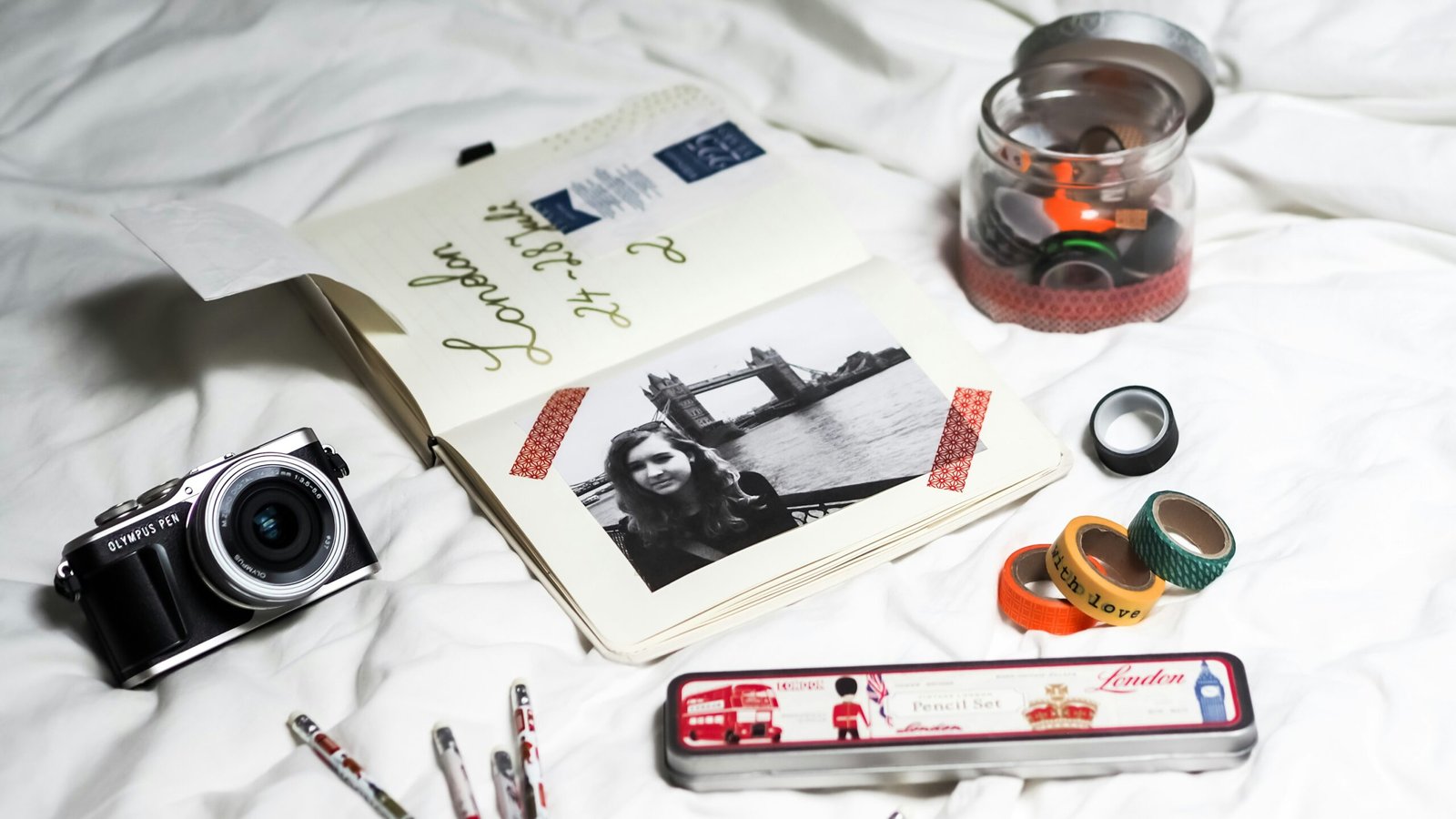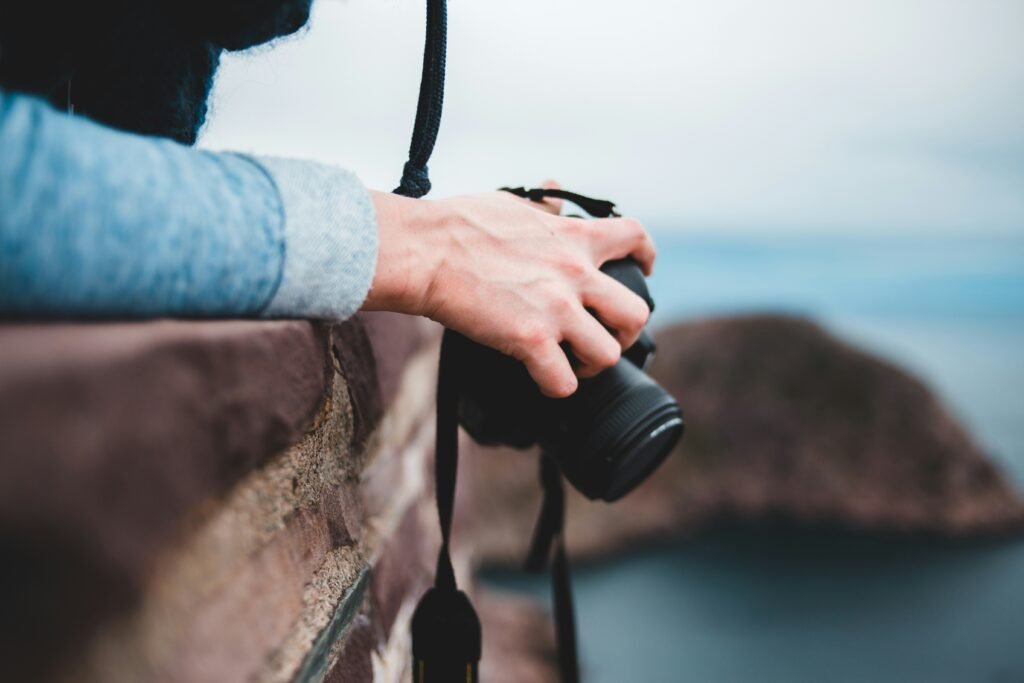Introduction to Cherishing Travel Memories
Traveling is more than just visiting new places; it is an opportunity to immerse oneself in diverse cultures, experience new adventures, and create lasting memories. Often, when people return from their journeys, the urge to collect physical souvenirs can overshadow the significance of the experiences themselves. However, the true essence of travel lies in the memories we create, not the objects we accumulate. As we navigate a world that increasingly values experiences over possessions, it becomes essential to find innovative ways to preserve those moments without relying on traditional souvenirs.

Memories foster a connection to the places we have been and the people we have encountered. By focusing on cherishing these experiences, we unlock deeper emotional ties to our travels. The act of remembering can enrich our lives, instilling a sense of nostalgia that often brings joy and reflection. Creative expressions, such as journaling, photography, or even digital storytelling, serve as powerful tools to maintain this connection. They encourage us to explore our personal reflections and the emotions associated with our adventures, providing an opportunity to revisit those moments throughout our lives.
Moreover, utilizing innovative methods to keep our travel memories alive can inspire us to recount our experiences in fresh ways. Engaging in creative outlets allows us to craft narratives that capture the essence of our journeys, ensuring that the spirit of our travels is never lost. As we delve into various techniques to cherish these memories, it is important to prioritize the depth of our experiences over the physical items we may otherwise seek. Ultimately, the aim is to preserve our travel memories in a way that invokes joy and inspiration long after our trips have concluded.
Travel Journaling: Documenting Your Journey
Travel journaling is an art that enables individuals to encapsulate their adventures, ensuring that memories remain vivid long after the journey has concluded. By committing experiences to paper, travelers can engage in a reflective practice that enhances the enjoyment of their trips. Different styles of travel journaling cater to diverse preferences, including narrative entries, lists, and visual journaling. Each method allows for personal expression, whether through detailed writing or creative sketches.
When undertaking travel journaling, consider what resonates with you personally. Writing about daily encounters, local cuisine, and the cultural nuances observed can offer a rich tapestry of experiences that illustrate your journey. Additionally, documenting emotions, thoughts, and reflections on each destination will create a narrative that is as unique as the journey itself. This introspective aspect not only preserves your travels but also enhances mindfulness during your explorations.

To elevate your travel journal, integrating sketches or doodles can be particularly rewarding. Visual elements, such as quick sketches of landscapes or people, garnish the pages with a dynamic aspect that captures the essence of a place. Even simple doodles can evoke strong memories and provide a visual narrative complementary to your written accounts. Consider carrying small art supplies while traveling; a compact watercolor set or colored pencils can facilitate spontaneous creativity, enriching your documentation in a fun and engaging manner.
Incorporating photographs alongside your entries can also prove beneficial. Attach printed images or ephemera, like tickets or brochures, to create a multi-dimensional representation of your experiences. This format not only makes revisiting memories enjoyable but also serves as a personal time capsule, capturing the vibrancy of your travels. Travel journaling, therefore, stands as an invaluable method to keep your travel memories alive, fostering a deeper connection to the adventures you have embarked upon.
Creating Digital Scrapbooks for Lasting Memories
In the age of technology, preserving travel memories has evolved beyond traditional scrapbooking. Digital scrapbooks offer a unique, flexible platform for capturing the essence of your adventures in a creative and lasting manner. Various tools and platforms, such as Canva, Adobe Spark, and Mixbook, enable you to create intricate digital scrapbooks filled with personal touches. These platforms boast user-friendly interfaces, extensive templates, and functionalities that simplify the design process, allowing you to focus more on your creativity rather than technical difficulties.

One of the primary benefits of digital scrapbooking is its versatility. Unlike traditional scrapbooks, which can be bulky and cumbersome, digital versions can be stored, shared, and edited with ease. This means you can revisit your memories, add new experiences, or modify designs without the need for physical materials. You can utilize photos, text, and various design elements—such as stickers, backgrounds, and frames—to reflect the key moments of your journey. Integrating journaling is particularly important, as it allows you to express the emotions and thoughts tied to each experience. Engaging storytelling can transform simple photos into compelling narratives that capture the essence of your travels.
Additionally, sharing your digital scrapbook with friends and family is a seamless process. Many platforms offer options to export your scrapbook as a PDF or share it directly through social media and email. This not only keeps your loved ones in the loop about your travel experiences but also invites them to engage with your memories. By creating a digital scrapbook, you not only enhance your storytelling but also ensure that your travel memories are preserved in an accessible, appealing format for years to come.
Photo Rituals: Capturing Moments
Establishing photo rituals during travels can significantly enhance your experience and help preserve the essence of your journey. A photo ritual is a practice where you intentionally capture moments in specific styles, at designated times, or in locations that hold significance. For example, you might choose to take a photo at sunrise each day, highlighting the changing landscapes and lifestyles around you. This not only establishes a routine but also allows you to witness the world waking up in diverse settings.
Another engaging idea is to focus on specific themes, such as local cuisine or architectural details. Capturing the vibrant colors and intricacies of street food can tell a powerful story about a region’s culture and traditions. Alternatively, you might decide to document architectural styles that resonate with you, from ornate facades to minimalist designs. By immersing yourself in these details, you can build a visual narrative that speaks volumes about your travel experience.
When returning home, it is essential to curate these photos thoughtfully. Create a cohesive storytelling experience by selecting your favorite images and grouping them by theme or location. Digital tools and apps offer various options for creating photo albums, slideshows, or even printed photo books. Additionally, consider writing captions or short anecdotes that accompany each image, providing context and allowing your memories to come alive on the page. These practices transform mere photographs into cherished keepsakes that encapsulate the spirit of your adventures, ensuring your travel memories remain vibrant and resonant long after your journey has concluded.
Memory Boxes: A Non-Traditional Approach
A memory box offers a unique and personalized way to preserve travel memories that transcends the often generic souvenirs found in tourist shops. By curating a collection of non-traditional keepsakes, travelers can encapsulate the essence of their journeys in a manner that is meaningful. The idea is to focus on items that represent experiences rather than material goods; thus, ticket stubs, maps, and even local plants or seeds can fill the box. Such items often carry immeasurable stories behind them, allowing travelers to relive memories as they look through their curated treasures.
For instance, an old bus or train ticket stub from a scenic journey can evoke vivid memories of the landscapes passed or the people met along the way. Similarly, a handwritten note or a postcard exchanged with a local can serve to remind travelers of the unique cultural encounters they experienced. Including maps, whether they depict a specific location or a broader region, can provide context and add depth to the memories being preserved. When crafting your memory box, also consider incorporating textures—such as fabric samples from traditional clothing—that can visually represent the place and its culture.
Arranging and displaying the contents of a memory box can enhance its aesthetic appeal and functionality. Grouping items thematically or chronologically could provide a narrative structure that guides the viewer through one’s travels. Additionally, using clear containers or shadow boxes can allow for easy visibility and access while keeping items protected. These memory boxes not only serve as personal mementos but can also act as conversation starters for guests visiting your home, inviting them to engage with your stories and experiences beyond conventional souvenirs. In this way, a memory box becomes an enduring collection that captures the spirit of adventure and exploration, ensuring that cherished travel experiences remain alive and accessible long after the journey has ended.
Engaging Friends and Family: Memory Sharing Sessions
Sharing travel experiences with friends and family can enhance personal connections and create lasting relationships. One effective way to accomplish this is through organized memory sharing sessions. These gatherings can take various forms, ranging from informal dinner parties to structured presentations, allowing participants to relive the adventures through storytelling and visual aids. Inviting friends and family to partake in these memory sharing evenings not only fosters a sense of inclusion but also provides an opportunity to bond over shared experiences.

During these sessions, travelers can present photos and videos from their trips, accompanied by narratives that highlight the emotions and stories behind each captured moment. Encouraging open dialogue allows others to ask questions and share their related experiences, enriching the storytelling process. This approach elevates travel memories beyond personal enjoyment, transforming them into collective recollections that everyone can appreciate. Not only does this facilitate a deeper connection amongst participants, but it also encourages the exchange of travel tips and recommendations that can inspire future adventures among family and friends.
Another collaborative method for preserving travel memories is the creation of joint memory albums. By gathering pictures, ticket stubs, and other memorabilia, families can compile these elements into a shared scrapbook or digital photo book. This collaborative endeavor not only enhances creativity but also serves as a tangible reminder of the adventures conquered together. Engaging loved ones in this process adds different perspectives and narratives, enriching the overall travel experience stored in memory. Overall, combining these methods provides a meaningful avenue for both sharing and preserving cherished travel memories, ultimately nurturing a supportive and interconnected family dynamic.
Utilizing Technology: Apps and Online Platforms
In today’s digital age, preserving travel memories has become more accessible and engaging through various technology-driven applications and online platforms. By harnessing the power of these tools, travelers can create digital journals, elaborate scrapbooks, or simply organize photo albums. A range of options exists to accommodate different preferences, whether one seeks free solutions or more advanced paid services.
One popular application for documenting travel experiences is Day One, which allows users to maintain a diary by integrating photos, notes, and locations. With its user-friendly interface, Day One facilitates effortless entry and organization of memories. Another notable option is Travel Mapper, designed for those who wish to visually track their journeys on a map. This app gives users the opportunity to pin locations, add photos, and jot down experiences associated with each destination.
For individuals who enjoy the art of scrapbooking, Canva provides a vast array of templates and design tools to curate memorable pages. This platform allows for creative customization, enabling users to seamlessly combine text, photos, and graphics for a personal touch. Additionally, Google Photos remains a reliable option for storing and organizing images, offering various features like automatic album creation and sharing capabilities with friends and family.
Social media platforms can also be powerful tools for documenting travel experiences. By sharing travel stories on Instagram or Facebook, users generate a digital archive of their adventures while engaging with a community that shares similar passions. If privacy is a concern, platforms like Journey provide a more controlled space for reflecting on trips without the need for public sharing.

In conclusion, utilizing technology through various apps and online platforms empowers travelers to document and share their adventures dynamically. These tools not only enhance the process of preserving memories but also offer creative ways to revisit and engage with past experiences in an innovative manner.
Artistic Expressions: Turning Memories into Art
One of the most enriching ways to preserve travel memories is through the medium of art. Artistic expressions allow travelers to transcend the traditional souvenir approach, instead creating personalized keepsakes that encapsulate their unique experiences. Engaging in activities such as painting, collage, or mixed media can evoke powerful emotions and transport individuals back to the moments that defined their journeys.
Painting, for instance, offers a diverse range of possibilities for expression. A traveler may choose to recreate scenic landscapes, vibrant markets, or even abstract interpretations of their experiences. The mere act of selecting colors and brush strokes can often bring forth vivid recollections—perhaps a sunset on a beach in Bali or the bustling streets of Tokyo. This not only serves as a memory but can also become a stunning focal point in one’s home.
Collage is another fascinating method for transforming memories into art. By combining photographs, ticket stubs, and other memorabilia, individuals can create a visual narrative of their adventures. This method allows for creative freedom and intuitive design, enabling artists to arrange elements that resonate with their experiences. Each component serves as a reminder, triggering emotions and stories that provide a deeper connection to the places visited.
Additionally, mixed media art encourages the use of diverse materials, blending techniques and textures. This allows for a more comprehensive representation of travel experiences. For instance, incorporating sand from a treasured beach alongside painted images from a local festival can create a 3D artwork that not only looks striking but also feels authentic. Such artistic endeavors not only celebrate the past but also foster engagement with emotions tied to these cherished moments.
By exploring these artistic avenues, travelers can cultivate a gallery of memories that speaks to their individual journeys, transforming moments into compelling visual narratives that are both meaningful and personally significant.
Conclusion: The Lasting Impact of Creative Memory Keeping
As we have explored throughout this blog post, the essence of travel lies not just in the destinations we visit, but in the memories we create along the way. Traditional souvenirs often fall short in capturing the nuances of our experiences, whereas creative memory-keeping methods offer a deeper connection to our journeys. By employing various strategies such as photo essays, travel journals, or multimedia presentations, we can breathe life into our memories, transforming fleeting moments into lasting narratives.
Engaging in creative memory keeping allows travelers to relive their adventures in a more personal way. Consider the vibrant memories created through crafting a travel scrapbook or curating a digital story that combines images, sounds, and videos. These methods have the potential to create a dynamic and immersive experience that mere physical tokens may not achieve. As we document our travels through unique lenses, we not only preserve moments but also share our stories with friends and family, inspiring them to seek their own adventures.
Moreover, the act of creatively preserving travel memories can enhance our overall travel experience. It encourages mindfulness during our trips, prompting us to observe details we might otherwise overlook and to reflect on the significance of our experiences. Through creative avenues, we cultivate a greater appreciation for the rich tapestry of culture, people, and landscapes we encounter. The integration of creativity in memory preservation elevates our adventures, making them more meaningful.
In conclusion, as you embark on your future travels, we encourage you to embrace one or more of the creative methods discussed. By doing so, you are not only committing to keeping your travel memories alive, but also enriching your experiences beyond the physical journey. Each travel story deserves to be told and cherished in a way that reflects the true spirit of discovery and adventure.


